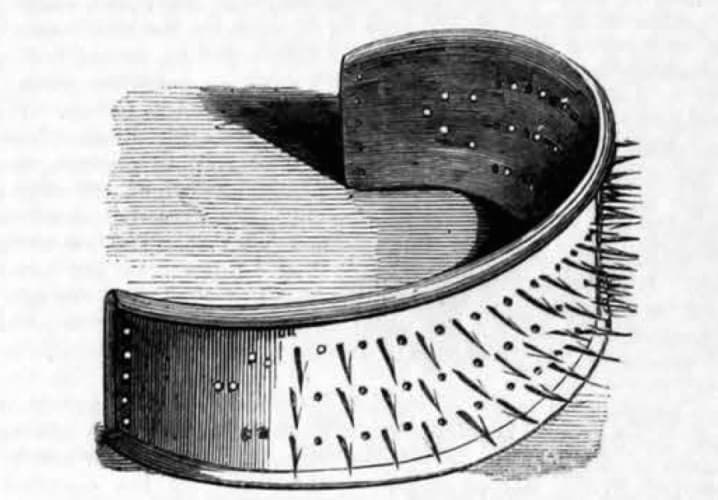
Developed to foil would-be throttlers, How’s patent garotte-preventing stock was designed to be worn around the neck and disguised as a stock (a type of ornamental cravat popular with the Victorians).
While the illustration shows the spikes or pins ‘in naked truth revealed’, The Engineer reported that ‘in the real finished article…the spikes are ingeniously hidden, and the outside of the stock presents a smooth satin or other face.’
Jokingly coming down on the side of beleaguered stranglers, the magazine wrote: ‘There can be no mistake about the cruel deception thus intended to be practised upon the unsuspecting garotter, who in his innocence is supposed to grasp his victim in the middle of the stock.’
However, the article went on to suggest that attackers, once they became aware of the threat posed by this item of sartorial security would simply ‘look a little higher, and by means of a rope or other simple contrivance would circumvent the neck above the limits of the “preventive”.’ The Engineer therefore calls for a minor redesign that would ‘heighten the article by an inch or more.’
The article also questions the need to hide the spikes and suggests that a similar device with plainly visible spikes might actually be more effective and would ‘probably prevent even an attempt being made upon the liberties of the windpipe.’




Red Bull makes hydrogen fuel cell play with AVL
Surely EVs are the best solution for motor sports and for weight / performance dispense with the battery altogether by introducing paired conductors...